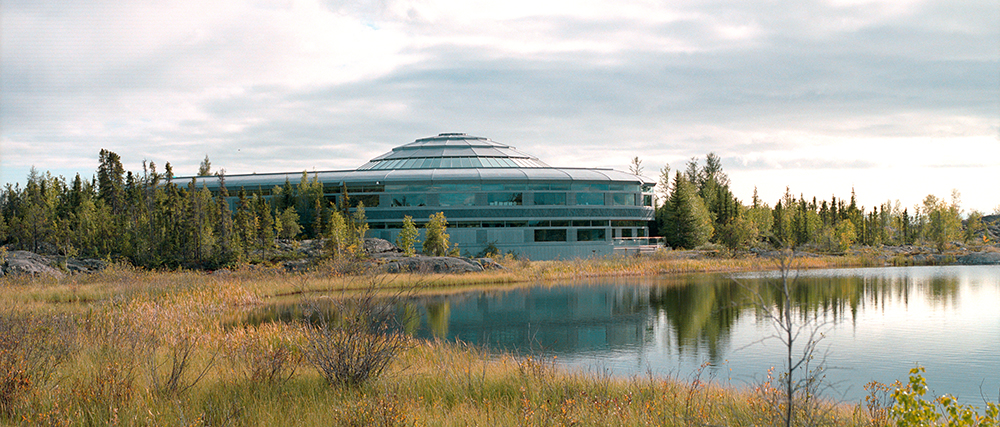Legislative Assembly Building & Capital Site
Yellowknife, Northwest Territories, Canada

The landscape design for the Northwest Territories Legislative Assembly Building in Yellowknife presented landscape architect Cornelia Oberlander with unique challenges. Yellowknife is 250 miles south of the Arctic Circle, a remote part of Canada where the plant hardiness zone is zero. Responding to the limitations of climate and a desire to reduce the impact of building construction, Oberlander used plants exclusively from local sources and devised creative methods of approaching the commission. “Invisible mending,” repairing the damage done to the native landscape, became her design aesthetic.
The building site was carefully chosen to reflect the beauty of the flat, scrub landscape, and to incorporate rock outcroppings, a peat bog, and Frame Lake. In collaboration, the architects, landscape architect, and engineers nestled the building, designed by Gino Pin in the early 1990s, into the rocky landscape at the edge of an old white spruce forest so that the winds from the lake could sweep over the building without resistance. Conservation and development were handled in a systematic, holistic way to maintain vital ecological processes, conserve biological diversity, and utilize native ecosystems of plants and animals.

Because nurseries were not available in the far north, seeds from indigenous plants, such as northern rose and kinnikinnick, were gathered by a professional nurseryman within a five-mile radius of the building for propagation in Vancouver. One shoebox filled with ten saxifrage plants was used to generate 2,800 new plants for the green roof of the mechanical wing. Mountain cranberry, cranberry, and red osier dogwood were propagated from cuttings. Two years after collection, plants were mature enough to be returned to the site just as the building neared completion.

Restoration of the peat bog, which had been compromised by an access road created during construction, involved scooping up vegetated mats from the bog with a front-end loader and replanting them in disturbed areas. Along with cloudberry and sedges, these mats helped to invisibly mend damage to the area. Since topsoil wasn’t available in Yellowknife, clay from the building excavation was mixed with sand from a nearby location for the green roof. Thanks to Oberlander’s sensitive approach to the site, the plantings around the Legislative Assembly Building thrive without winter dieback and meld seamlessly into the surrounding native landscape.
All photographs used with permission of Etta Gerdes Fotografie.